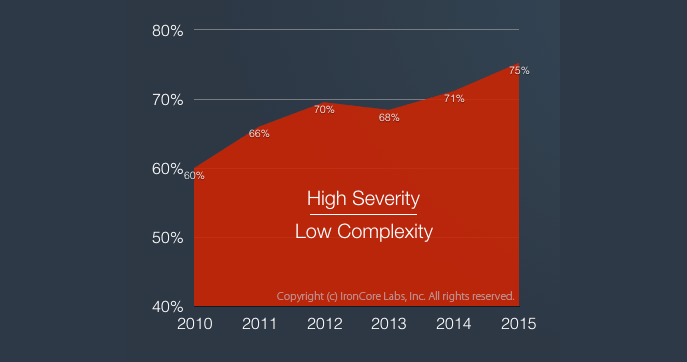Quantum is the New Global Arms Race
News broke this week that China has launched a satellite that can communicate using quantum physics.
This is huge news.
There is a general assumption that the U.S. National Security Agency (NSA) has unparalleled code breaking and electronic eavesdropping capabilities. However, quantum communications are by their very nature impossible to passively intercept.
If the Chinese experiments with quantum entangled photons in space are successful, it will severely hamper the ability of agencies such as the NSA from spying on Chinese communications.
Quantum communications are by their very nature impossible to passively intercept.
How It Works
Background
Communications today are almost entirely electronic and rely heavily on cryptography for security. Cryptography in turn relies on shared secrets that are used to transform communications into an unreadable state. The secure exchange of those secrets typically relies on math that is easy to compute in one direction, but extremely hard to reverse without trying every possible solution. Methods are often measured by how many years it would theoretically take to solve these math problems using all of the computing power in the world and assuming faster methods haven’t been discovered and kept hidden. Secure algorithms are estimated to take some 40 years of intense computing power to crack. In practice, however, the algorithms and typical key sizes of just ten years ago are readily crackable today.
Quantum Entanglement
The fundamental basis for quantum communications is a phenomenon known as quantum entanglement. Albert Einstein wrote a paper on the phenomenon in 1935 and described it as, “spooky action at a distance.”
When pairs or groups of particles become entangled, they work in concert with each other. Changes to one particle in the group cause complementary changes to the other particle(s). Mysteriously, this remains true even if the particles are separated by great distances. The speed with which this happens is faster than the speed of light — in some cases, the speed of reaction of separated entangled particles is 10,000 times faster than the speed of light.
Here’s where it gets really interesting: measuring anything about one of the particles affects all of the particles. They’re complementary and work together as a system. If you change the spin on one, it changes the spin on all of them.
This means that one could intentionally make changes to one particle’s rotation, speed, direction or other property and impact the entire group of particles.
Imagine you could entangle people like you entangle particles. You could scatter a group of three entangled people around the galaxy, hit one in the stomach, and observe as the other two almost instantaneously react as if they had been hit in the stomach.
Scientists don’t understand why this works. Experiments can reproduce the phenomena, but can’t yet explain it.
Quantum Key Distribution (QKD)
How these particles were changed is a secret known only to those who have the particles through a process known by the scifi sounding term, Quantum Teleportation. Effectively this is a way to securely communicate a secret (a “key” in crypto terms), which can then be used to securely encrypt standard communications channels in more conventional ways, such as with symmetric key cryptography or shared one time pads. This idea of using quantum entanglement to securely communicate secrets is generally known as Quantum Key Distribution (QKD) and will almost certainly be the basis for future communications schemes.
Linear Optical Quantum Computing (LOQC)
Quantum mechanics can be applied to many different types of particles, but one popular area of study is photons, “the fundamental particle of light.” Several published experiments have successfully entangled photons in pairs and in groups. Photons are also the basis for LOQC, which is notable in part because it has applications both to quantum communications and also to quantum computing. Quantum computing is another topic entirely, but the major impact of quantum computing is the theoretically fast cracking of today’s commonly used encryption systems.
In other words, the technology being used by the Chinese has applications both for securely sharing secret keys without the possibility of interception, and also of potentially breaking existing ciphers.
The Chinese QESS Satellite
The satellite launched by the Chinese is named Quantum Experiments at Space Scale (QUESS), but it has been more affectionately nicknamed Micius, after an ancient Chinese scientist and philosopher.
The technology being used by the Chinese has applications both for securely sharing secret keys without the possibility of interception, and also of potentially breaking existing ciphers.
The idea is that the process of entanglement and particle manipulation will have less interference in space than when attempted on Earth. So the satellite contains a component for entangling photons, for sending at least one of the entangled photons back to Earth, and then for experimenting with using the entangled photons for communicating shared secrets via QKD.
China is not the first to think of this, and this week’s launch should not be a surprise. China publicly announced their intention to launch this satellite back in 2013. Various quantum-space experiments have been happening all around the world for the past ten years with a race to see who can push distances the farthest.
Looking Ahead
The race toward practical quantum computing and quantum communications may have started years ago, but it got very real this week with China taking a notable lead. China’s satellite launch should be a wakeup call to the U.S. to get on the ball. The race towards more secure communications is on, and the future balance of power for cyber security hangs in the balance.
Photo credit: SpaceX




